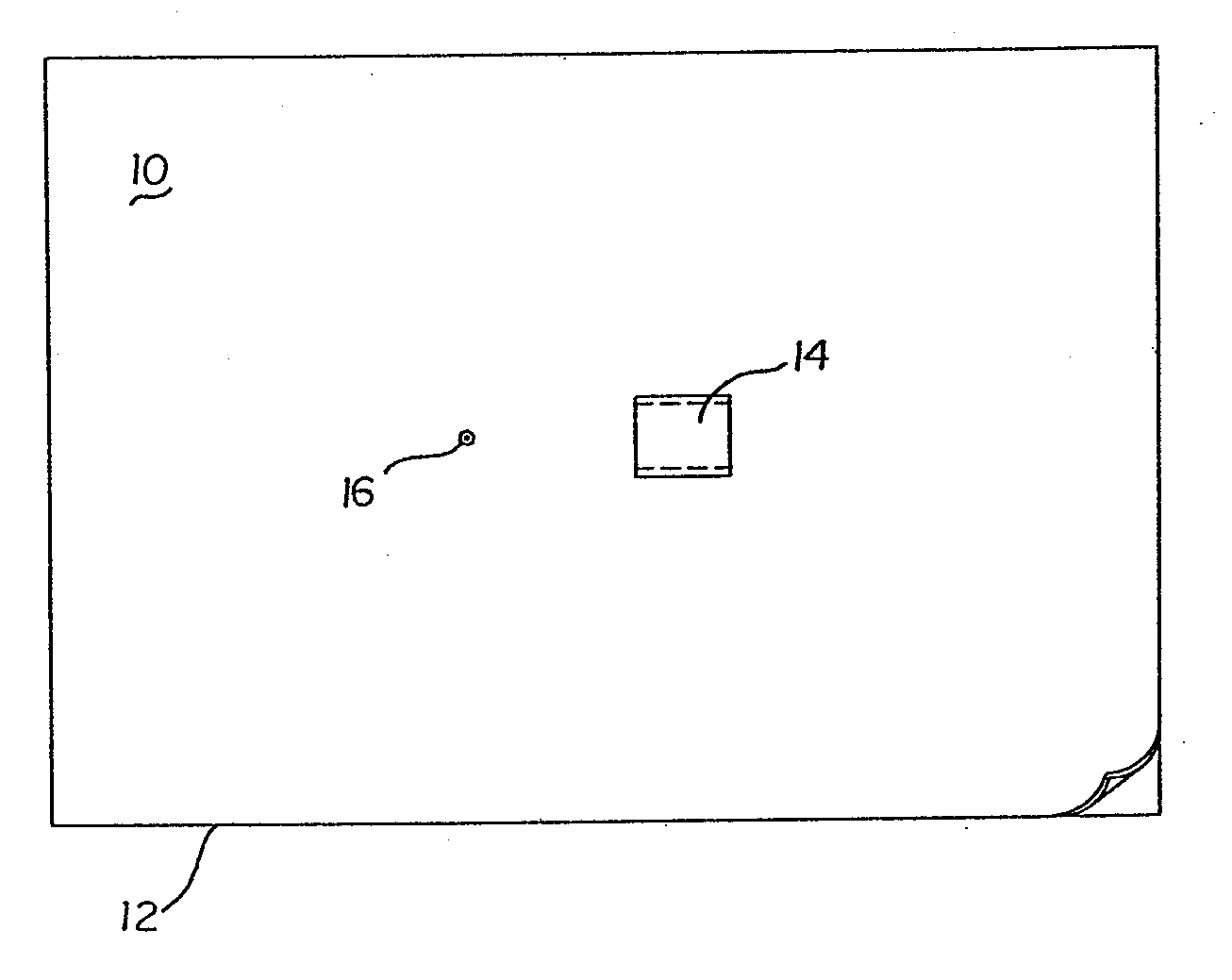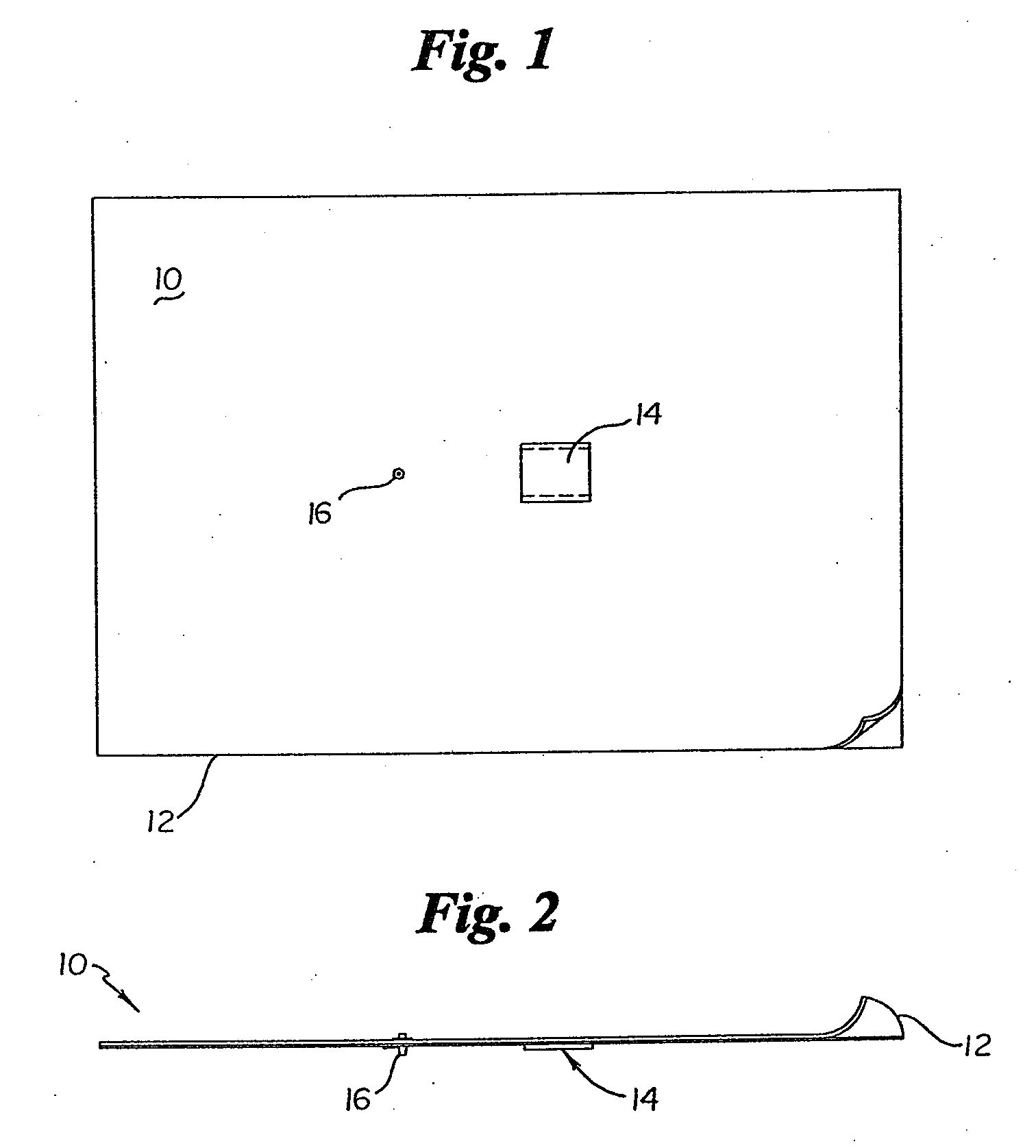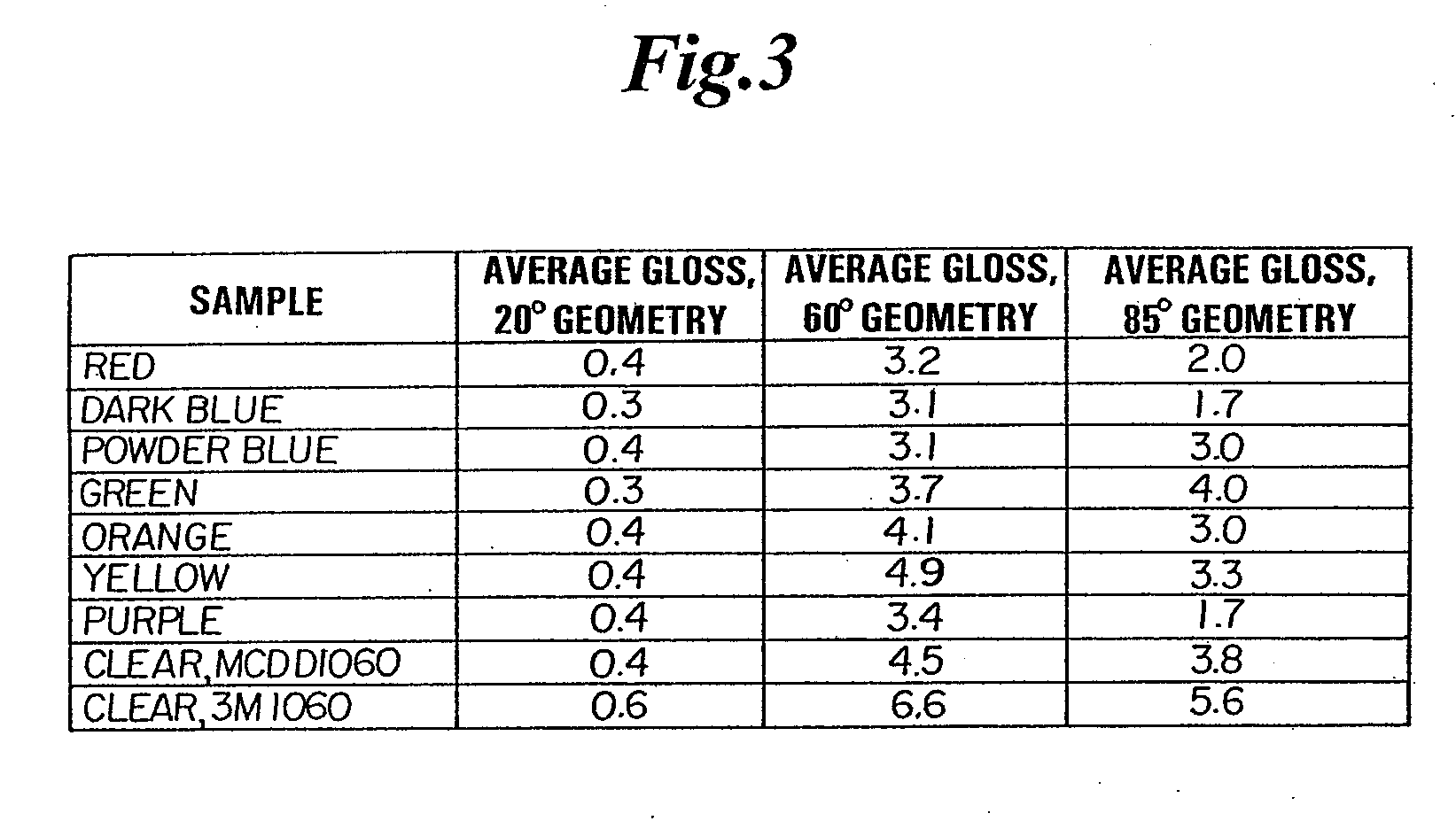Minimally light reflective surgical drape
a drape and light technology, applied in the field of surgical drapes, can solve the problems of eye fatigue and eye strain, difficulty in focusing one's vision so as to achieve the effect of reducing the strength of eye muscles
- Summary
- Abstract
- Description
- Claims
- Application Information
AI Technical Summary
Benefits of technology
Problems solved by technology
Method used
Image
Examples
Embodiment Construction
[0026] Referring to FIGS. 1 and 2, there is shown a surgical drape 10, more particularly an ophthalmic incise drape, having a perimeter edge 12, an adhesive patch 14, and a drain port assembly 16. These figures are provided to illustrate one embodiment of the subject invention. Although an ophthalmic drape is shown, it is to be understood that the present invention is not so limited, with any drape style or configuration being formed, treated, otherwise manufactured, etc., as is known to those of skill in the pertinent art, so as to reduce eye strain consistent with the invention of the subject disclosure. Drape styles suitable for the practice of the subject invention include, but are not limited to, those disclosed in U.S. Pat. Nos. 4,745,915 and 6,102,044, each of which being incorporated herein by reference.
[0027] The subject invention includes the use of colorants, dyes, pigments, etc. to form translucent polymeric surgical drapes that absorb a selected range of wavelengths fr...
PUM
 Login to View More
Login to View More Abstract
Description
Claims
Application Information
 Login to View More
Login to View More - R&D
- Intellectual Property
- Life Sciences
- Materials
- Tech Scout
- Unparalleled Data Quality
- Higher Quality Content
- 60% Fewer Hallucinations
Browse by: Latest US Patents, China's latest patents, Technical Efficacy Thesaurus, Application Domain, Technology Topic, Popular Technical Reports.
© 2025 PatSnap. All rights reserved.Legal|Privacy policy|Modern Slavery Act Transparency Statement|Sitemap|About US| Contact US: help@patsnap.com



